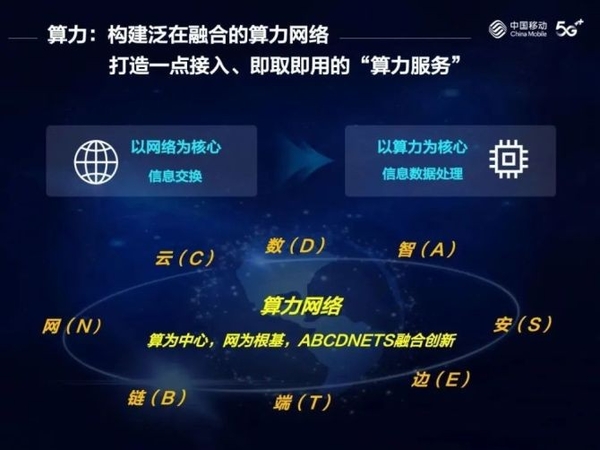It's very similar to Qianmo Traffic, what is the computing power network that everyone is talking about?

It's very similar to Qianmo Traffic, what is the computing power network that everyone is talking about?
"Traffic in the fields, chickens and dogs hear each other." This is Tao Yuanming's description of the leisurely pastoral life in the article "Peach Blossom Spring" in the Eastern Jin Dynasty. At that time, the author, who was in a period of academic stress, was also impressed by Tao Yuanming's "open-minded" attitude towards things, especially the sentence "When you come back, the fields will never return", which is really refreshing to read. The topic goes back to "Peach Blossom Spring". The "transportation on the rice paddies" mentioned in the article refers to the staggered connection between the north-south ridges and the east-west ridges. It mainly describes the roads extending in all directions and forming a road traffic network. Can be unimpeded in the traffic network.
Today, whether it is an airplane flying over the land overlooking the land, a Fuxing high-speed train running on the vast land of the motherland, or a highway stretching thousands of miles from east to west and from north to south, people can deeply feel the impact brought by the traffic network. convenience. It can be said that the transportation network carries passenger transport, vehicle flow, and logistics, and is the vein of the economy and the link of civilization. Just like the transportation network is a network that carries traffic, passenger transportation, and logistics, the computing power network is a future network architecture that connects "massive data" and "efficient computing power". Those data and computing power are like cars driving on the transportation network, transporting "materials" to where they are needed.

Where does the computing power network come from?
This starts with the relationship between computing and the network. In the 1960s and 1970s, in order to serve the communication between computers in schools and scientific research institutions, LAN technology was born. It can be said that the emergence of the Internet not only enables peer-to-peer data exchange, but more importantly, it enables some complex and high-end computing power (that is, computing power) to be accessible to ordinary users. Specifically, the network enables users to establish a connection with the computer room or data center, access the data center server, and share the CPU computing power and storage of the server.
In addition, for complex and difficult computing tasks, they can be assigned to different computers through the network to jointly complete the computing tasks. Into the 1980s, the number of networks is increasing, and the scale is getting bigger and bigger. As a result, the backbone network connecting major regions was established and eventually formed the global Internet. Then, the birth of the Internet data center carried larger and stronger computing power resources. Especially in the 21st century, the emergence of cloud computing turns all computing resources such as CPU, memory, hard disk, and graphics card into "resource pools", which can be allocated flexibly and allocated to users.
This is the evolution of computing power, and the network has continued to evolve over the years. Initially, networks focused on improving transmission rates, capacity, and coverage. In the 21st century, the communication network realizes the physical connection between people, and the physical connection between people and data centers. At this time, all computer software and hardware are abstracted and become the same resources as water and electricity, called "computing power resources", and all applications are also collectively referred to as "computing power applications". However, people have different needs for computing power. Some people want computing power with strong performance, while others want computing power with fast response speed...
To meet these differentiated needs, cloud computing alone is not enough, so everyone focuses on the network and enters the era of cloud-network collaboration. In this era, the cloud can mobilize the network, and the network can also cooperate with the cloud. However, the widespread implementation of data-centric artificial intelligence services has intensified the demand for computing power in the whole society. Therefore, the stage of in-depth coupling between network and computing power has gradually moved from cloud-network integration to computing-network integration, that is, "computing power network".
The significance of the existence of the computing power network is to provide users with the most suitable computing power resource services, and to solve the core problem is the insufficient supply of computing power in the entire network under the rapidly expanding demand for computing power.
Continued advancement of computing power network construction
The in-depth coupling of network and computing power has created a computing power network. This is not a specific technology, but more like an emerging network. Its structure and nature are completely different from the past. To put it simply, the core purpose of the computing power network is to provide users with computing power resource services. It is to completely "integrate" computing power resources and computing power scheduling into the communication network, and provide the most suitable resources in a more integrated and convenient way. Computing resource services required by users.
In other words, the basic way of using the computing power network is that after the emergence of more advanced communication technologies such as 5G and Gigabit broadband, faster network speeds, and lower delays, cloud computing can use the network to transfer a large number of various scattered computing power. Resources are packaged and aggregated, and then flexibly transferred to users according to the needs of different users.
The three major operators are also in a leading position in the construction of computing power networks. According to relevant data, in 2022, China Mobile's investment in computing power will reach 48 billion yuan, adding about 180,000 cloud servers, and the transmission network investment will continue to increase by 5%, reaching 47.4 billion yuan. In 2023, China Mobile expects to invest 45.2 billion yuan in computing power network capital expenditure, add more than 240,000 new cloud servers, and add more than 40,000 externally available IDC racks.
Telecom has added 160,000 cloud servers in 2022, increasing its computing power by more than 8%; the expected computing power (cloud resources) will invest 14 billion yuan, of which IDC will invest 6.5 billion yuan, and will add 45,000 racks. In 2023, China Telecom expects to invest 19.5 billion yuan in computing power, and IDC to invest 9.5 billion yuan.
In addition, China Unicom expects to invest 14.5 billion yuan in computing power network in 2022, a year-on-year increase of 65%, and cloud investment is expected to increase by 88%. In 2023, China Unicom will invest 14.9 billion yuan in computing power, accounting for 19.4% of the total capital expenditure, and the scale of IDC racks will reach 363,000.
In fact, the core direction in the construction of the computing power network is the operation and scheduling of computing power. The computing power network is not only about data centers and network coverage, but also needs to be coordinated and deployed in order to meet the different needs of different users for computing power.
It is reported that China Mobile will aim at "ubiquitous computing power, symbiosis of computing and network, intelligent orchestration, and integrated services", and gradually promote computing power to become a social-level service that can be "one-point access, instant use" just like hydropower. Telecom clearly proposed three development stages from cloud-network collaboration, cloud-network integration to cloud-network integration, and focused on computing power discovery, trading, scheduling and scheduling. China Unicom has positioned the integration of computing and network as the "cloud-network integration 2.0" stage, and will focus on IPv6+ computing power network and all-optical computing power network to create a new type of digital information infrastructure integrating computing and network.
 It's very similar to Qianmo Traffic, what is the computing power network that everyone is talking about?
It's very similar to Qianmo Traffic, what is the computing power network that everyone is talking about?
write at the end
Today, the "computing power era" has come. First, computing power is expected to become a new kinetic energy and new engine that drives the digital economy forward; on the other hand, computing power is becoming a key factor affecting the country's comprehensive strength and international discourse power .
However, at present, my country's computing power network construction is still in its infancy, involving multiple industrial chains such as hardware, chips, access and interconnection, data centers, cloud computing, big data, artificial intelligence, and blockchain. In this context, the coordinated development of multi-industrial chains, as well as innovations and breakthroughs in basic theories, materials, and structures, are urgent problems to be solved.
In the future, the development of computing power will also be like Tao Yuanming's description of "traffic in the fields, chickens and dogs hear each other", but the computing power network is in a criss-cross network, allowing data and computing power to flow and flow, so that Computing power "hears about each other".